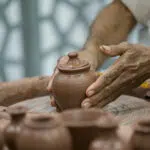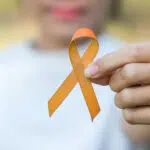National Dance/Movement Therapy Advocacy Day is celebrated every June 13 to educate more people about the new and unique form of psychotherapy called dance/movement therapy making waves around the world. It addresses mental health by honing in on the body, movement, and dance as a natural expression that aids physical and psychological healing. Furthermore, it’s a holistic therapy that believes that the mind, body, and spirit are interconnected and that changes in the body reflect changes in the mind and vice versa. Numerous people have benefited from this form of therapy worldwide, and many more are starting to practice it each day!
History of National Dance/Movement Therapy Advocacy Day
Dance/movement therapy (D.M.T.) emerged as a field in the 1940s as early innovators, many of whom were accomplished dancers, realized the extensive benefits of using dance and movement as a form of psychotherapy.
The American Dance Therapy Association (A.D.T.A.) defines it as “the psychotherapeutic use of movement to promote emotional, social, cognitive, and physical integration of the individual, for the purpose of improving health and well-being.” The idea of dance as therapy is credited to former dance educator and performer Marian Chace, who shifted her focus from dance techniques and education to her students’ individual movement communications and expressions.
After World War II, she was invited to work at St. Elizabeths Hospital in Washington, DC, where she was tasked with working with withdrawn, shutdown, and mute patients. She also worked with many war veterans. Her reputation for using dance as a means of communication and expression became widely known as she successfully reached nonverbal patients. She managed to break down their barriers through the power of movement, physical interaction, and dance by playing music, interacting with patients by mirroring their movements, establishing eye contact, engaging in physical contact, and waltzing to the rhythmic steps.
An increasing number of therapists worldwide are also recommending this form of therapy as the evidence supporting it continues piling up. These days, it’s common to find many places offering D.M.T. in various locations.
Erica Hornthal later founded National Dance/Movement Therapy Advocacy Day in 2019 to create awareness about this form of psychotherapy and allow more people to benefit from it.
National Dance/Movement Therapy Advocacy Day timeline
Marian Chace realizes the many benefits of dance and movement as therapy.
The American Dance Therapy Association is formed.
D.M.T. sparks much interest in American therapists, and D.M.T. evolves into its current form
Erica Hornthal establishes National Dance/Movement Therapy Advocacy Day to educate more people about its benefits.
National Dance/Movement Therapy Advocacy Day FAQs
How is D.M.T. different from just dancing?
People in treatment with a qualified dance therapist have the right to confidentiality, and dance therapists provide a safe space for people to express themselves. Movement becomes a language, and patients communicate conscious and unconscious feelings through dance, allowing the therapist to respond appropriately. D.M.T. is also influenced by theoretical frameworks, including psychodynamic theory, Gestalt theory, and humanistic theory.
How can you become a D.M.T. professional?
Many universities have started offering DMT undergraduate and master’s degree courses along with other psychology courses. Mental health professionals may also get certified through different institutions around the country and become licensed as dance/movement therapists.
What are the three primary purposes of D.M.T.?
D.M.T. is exercise, it’s therapeutic for mentally and physically at-risk populations, and it’s linked to healthy body image levels.
National Dance/Movement Therapy Advocacy Day Activities
Attend the Dance Therapy Advocates Summit
Attend the summit, which usually occurs every June. The summit welcomes practitioners and those intrigued by the field and looking to form a network within it.
Dance away
Put on some tunes and dance the night away in the comfort of your own home! Dancing, moving, and any sort of physical activity can greatly uplift your mental state.
Get involved
Enroll in a D.M.T. course near you and learn how to do it from professionals. D.M.T. classes are open to all and can benefit your physical and mental well-being even if you’re not suffering from any ailments.
5 Facts About Dancing That Will Blow Your Mind
Its benefits have been empirically proven
Dancing has been proven to help with stress, anxiety, communication issues, aggression, P.T.S.D., family conflicts, and disordered eating.
It makes you confident
Dancers are often more self-confident and have a more positive mindset.
It’s a gift from the gods
In ancient Greece, dance was seen as a gift from the gods because its two main qualities, order and rhythm, were treated as god-like.
It has physical benefits
D.M.T. can help with chronic pain, childhood obesity, arthritis, cardiovascular disease, and dementia.
It releases happy hormones
Dancing increases our happy hormones, like serotonin and dopamine, making us feel good instantly.
Why We Love National Dance/Movement Therapy Advocacy Day
D.M.T. has empirically-backed results
Several clinical studies have proven the benefits of D.M.T. for illnesses like Alzheimer’s, dementia, and even childhood obesity because the model has a social aspect. Research has also shown that it helps people manage depression, anxiety, and other mental health problems.
Movement is great for the body
Dancing or any form of physical activity instantly makes you feel good. D.M.T. combines the benefits of movement with psychological therapeutic models to help patients.
It allows for improved communication
Because of D.M.T’s social and cognitive aspects, it has improved the communication skills of individual patients and interactions between groups. For this reason, D.M.T. is suitable for people of all ages.
National Dance/Movement Therapy Advocacy Day dates
| Year | Date | Day |
|---|---|---|
| 2026 | June 13 | Saturday |
| 2027 | June 13 | Sunday |
| 2028 | June 13 | Tuesday |
| 2029 | June 13 | Wednesday |
| 2030 | June 13 | Thursday |





















